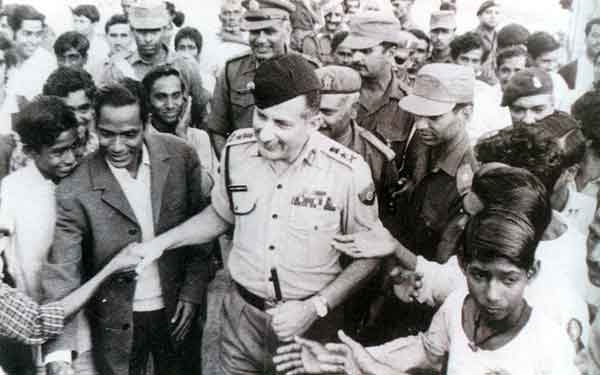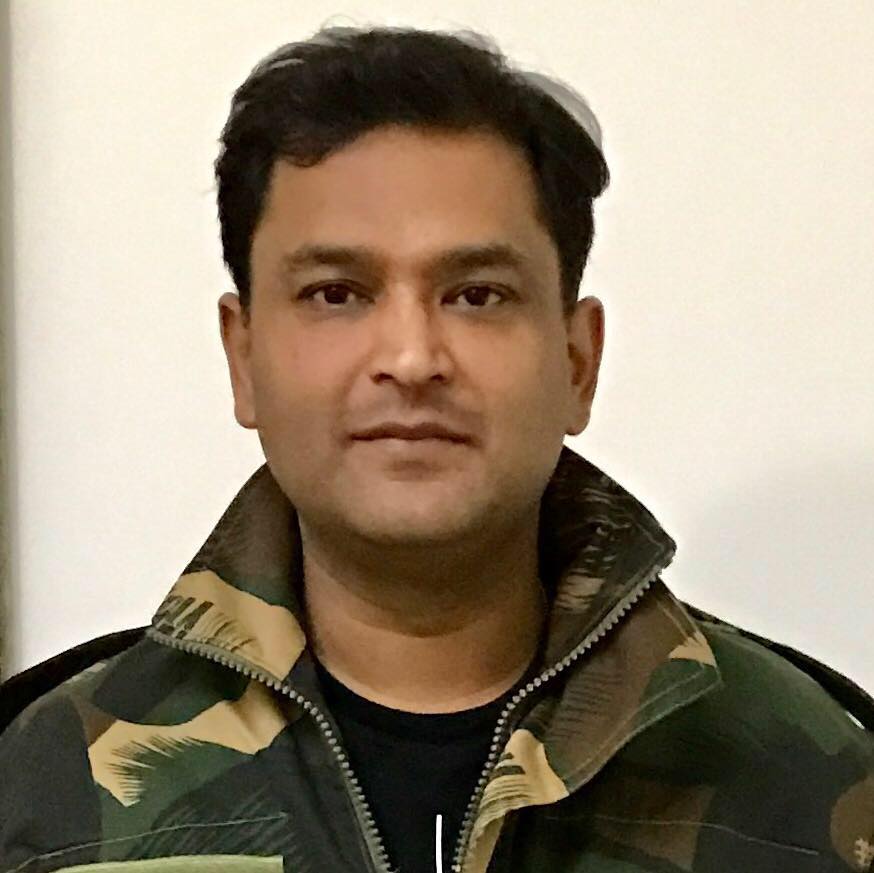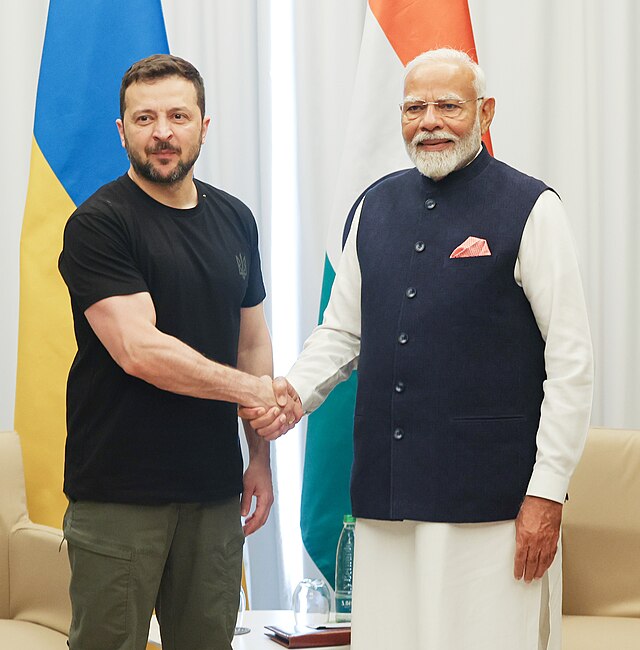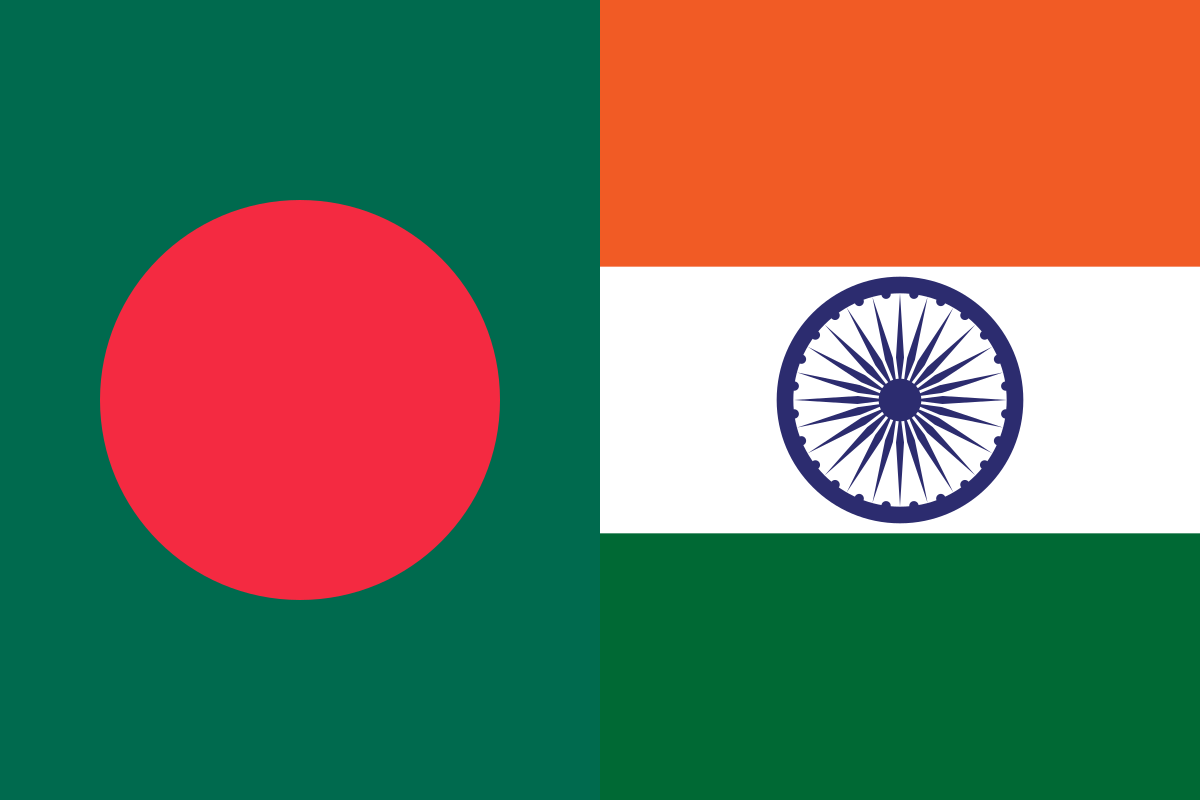
A Red Motorcycle and A Country

General Sam Manekshaw paced up and down his office, his furrowed brow almost touching the center of his forehead. His lean frame was ramrod straight, his gait long and striding, typical of infantrymen who spend their lifetime walking over harsh terrain. He knew that his army was plunging headlong into war. It was only a matter of time.
It had all started a year back in 1970, when Pakistan refused to accept its own election results. The Awami League had won 167 out of 169 seats in East Pakistan, making it the largest party in the Majlis-e-Shoora (Parliament). Its leader Sheikh Mujibur Rehman staked his claim to form the government. The claim was made, as per procedure, in the presence of the President of Pakistan, General Yahya Khan. Prime Minister Zulfiqar Ali Bhutto refused to give up power to a Bengali.
Tempers in East Pakistan were frayed. On 1 March 1971, Yahya Khan refused to convene the National Assembly. Local Bengalis ran amok, killing Bihari settlers, who were loyal to West Pakistan. In Chittagong alone, 300 Biharis were murdered. The Government of Pakistan used these killings to justify deployment of the Pakistan Army, which was, and remains to date, an overwhelmingly Punjabi and Pashtun army.
Things were spiraling out of control and to get a grip on the situation, the Pakistan Army launched Operation Searchlight on 21 March. The aim of the operation was simple – locate, engage and eliminate all “troublemakers”.
The Indian Cabinet wasn’t making things any easier for the Indian Army. With hundreds of thousands of East Pakistani refugees streaming into India every month, the strain on India’s fledgling economy was beginning to show. Tempers were frayed and Indira Gandhi demanded immediate action.
It was in April 1971 that Gen. Sam Manekshaw; Chief of Army Staff of the Indian Army told Prime Minister Indira Gandhi that it was tactically not feasible to attack. The monsoons would arrive anytime now and that would make movement extremely tough. The Indian Army was not immediately ready for a task of such magnitude. It would need time. And when it was ready, they would deliver. If this were not acceptable to the Prime Minister, the General would be pleased to resign.
Indira Gandhi refused to accept Manekshaw’s resignation. She gave him a free hand to choose the time and place of the attack.
What was it that the Prime Minister exactly wanted, Manekshaw asked?
Indira Gandhi said that she wanted Pakistan cut into half and a new country called Bangladesh created. Manekshaw said that he would deliver Bangladesh, but how he did it was up to him.
Gen. Manekshaw was affectionately called Sam Bahadur by the Gurkha troops he had spent a lifetime commanding. A Parsee who had served with Gurkhas; well, Mrs. Gandhi had one headstrong general to deal with. There are stories of conversations between Sam Manekshaw and Indira Gandhi, most of them hilarious. They shared tremendous mutual respect.
Across the border in Pakistan, the government and the army were building up war hysteria. In Lahore, Karachi and Islamabad it was common to see cars with “CRUSH INDIA” stickers. And Pakistan Radio started playing patriotic songs of Madam Noor Jehan. Whenever Pakistan Radio plays patriotic songs of Madam Noor Jehan, it means either of the two; war or coup.
The generals at GHQ Rawalpindi were worried. Something had to be done to arrest East Pakistan’s slide into chaos. It never occurred to them to talk to the Bengalis. They did what they had always done. They sent a general to do a politicians job. And then they committed an even more grievous mistake; they sent General Tikka Khan, the Butcher of Baluchistan.
On the night intervening 25-26 March 1971, Tikka Khan declared war on the sleeping and hapless Bengali population of East Pakistan. He let loose a reign of terror. Kill-and-dump operations, mass rapes by Pakistan Army soldiers, bayoneting of pregnant women, disappearances and torture chambers were tools of Tikka Khan’s trade.
The Butcher of Baluchistan became The Butcher of Bengal.
On 26 March 1971, Major Zia-ur Rehman, an influential Bengali major in the Pakistan Army declared Bangladesh’s independence from Pakistan. He did so on behalf on Sheikh Mujibur Rehman. On 27 March 1971, Indira Gandhi declared India’s support for the freedom movement of Bangladesh.
On 17 April 1971, the Bangladesh Government in Exile made a Proclamation of Independence at Village Baidyanathtola of District Meherpur (East Pakistan). A provisional government was set up under Tajuddin Ahmad. As word spread, Pakistan Army’s atrocities went into overdrive. There was no time or energy to bury all the dead separately. So, the Pakistan Army got Bengali labor to start digging mass graves.
More than 10 million East Pakistanis had come into India and were housed in refugee camps in Bengal, Assam, Tripura, Bihar and Meghalaya. These camps were home to intelligent youth who were motivated by Bengali nationalism. They became breeding grounds of rabid discontent against Pakistan and its army.
These refugee camps has interesting visitors; Indian Bengali speaking civilians who would talk for hours on end to these youth, always watching and evaluating. These Indians would speak about armed struggle and Bengali nationalism.
Those were heady days. The youth who believed in violent struggle became part of the Mukti Bahini. Unknown to them, the soft-spoken Bengali Indian visitors were watching every move. Initially, the young men did not know who the Indians were. They would later find out that these men were field operatives of an innocuously named Indian organization called the Research and Analysis Wing.
Much before the Indian Army entered Pakistan to cleave it into half, RAW had already launched covert operations on East Pakistan’s soil.
The Mukti Bahini comprised of Bengalis who had deserted from the Pakistan Army, elements of the paramilitary forces, police and civilians. It was a guerrilla outfit that attacked, harassed and cut of lines of communication and supply of the Pakistan Army in East Pakistan.
The monsoons were upon the subcontinent. Manekshaw worked like a man possessed, getting manpower, material and equipment in place. He travelled to various formations personally supervising preparations for war. The pace was feverish.
Pakistan was watching closely. On 23 November 1971, Pakistan blinked. President Gen. Yahya Khan declared a state of emergency and asked his people to prepare for war with India.
On the eve of 3 December 1971 at about 5:40 pm, Pakistan Air Force launched Operation Changez Khan. 50 fighter jets were used to target 11 locations across North Western India, including Agra. That evening Prime Minister Indira Gandhi addressed the nation. She said that Pakistan had attacked without provocation and retaliation was only to be expected.
India was now officially at war with Pakistan. That very night, the Indian Air Force responded by launching Operation Cactus Lily. It started aggressive operations inside Pakistani territory. In the morning, the IAF moved into top gear.
While the Indian Air Force was flying sorties day and night into Pakistan, the RAW operatives inside Pakistan were getting the Bengali maintenance technicians of the Pakistan Air Force to defect. The IAF flew over 4000 sorties between 3rd and 16th December 1971 in West Pakistan. The PAF could not keep up. The number of sorties flown by PAF decreased day by day. There was simply very little staff to maintain the aircrafts. RAW had delivered.
General Sam Manekshaw was now ready. He had planned every move and counter move in the minutest detail. He had all the men, material and training that he wanted for a successful operation against the enemy. He gave the orders.
The Indian Army invaded Pakistan.
Simultaneously, the Indian Navy launched Operation Trident. On the night of 4th and 5th December, it attacked the Karachi harbor using missile boats. Pakistani destroyer PNS Khyber and minesweeper PNS Muhafiz were sunk, and PNS Shah Jahan was irreparably damaged.
The Indian Navy did not lose momentum. On the night of 8th and 9th December, they launched Operation Python. The entire fuel reserves of the Pakistan Navy at Karachi were blown up. Indian Navy also sank 3 merchant ships off Karachi Harbor.
In the Eastern Theater, the Indian Navy deployed its aircraft carrier INS Vikrant. Vikrant launched air strikes deep inside East Pakistan. It also enforced a naval blockade of East Pakistan, rendering the enemy navy ineffective. Pakistan sent its submarine PNS Ghazi to attack Indian ships, but it sank under unexplained and mysterious circumstances off the coast of Vishakhapatnam.
On 9 December the Indian Navy suffered its biggest loss when Pakistani Navy submarine PNS Hangor sank Indian Navy’s frigate INS Khukri. 18 Officers and 176 sailors embraced martyrdom. While the ship was burning and sinking and evacuation was underway, Navy Captain Mahendra Nath Mulla who was commanding INS Khukri gave his own lifejacket to a junior officer, asking him to escape.
There is a tradition in the Indian Navy that the Captain does not abandon his ship, come what may. Captain Mahendra Nath Mulla, in the highest traditions of the Indian Navy, sank with his burning ship. He was awarded the Maha Vir Chakra, for courage beyond the call of duty.By 12-13 December 1971, much of Pakistan’s Navy was on paper. And its Air Force was on ground.
The Indian Air Force flew 1978 sorties in the East and about 4000 sorties in West Pakistan.
The Pakistan Army attacked at various locations on the Western front. The Indian Army responded and pushed deep inside Pakistan, capturing some 15,000 square kilometers of territory in Sindh and Pakistani Punjab. The Government of India later returned this captured territory to Pakistan, after the war.
In the Eastern sector, the Indian Army’s successes were stunning. Rather than replicate the “set piece” movements of 1965, the 1971 war was one that was reminiscent of the German ‘Blitzkrieg’ attacks. Nine Infantry Divisions were employed in a three-pronged attack, supported by armor, artillery and close air support. The Indian Army did not stop until it had entered Dhaka.
Lt. Gen. Jagjit Singh Aurora employed classic fast moving Blitzkrieg techniques, choosing weak enemy defenses and bypassing held positions. The pace of attack was blistering. While Lt. Gen. Aurora was attacking, the Indian Air Force wiped out the remaining fighter aircraft, achieving absolute air superiority. The Dhaka airfield was no longer an operational airfield. It was just a plot of land.
So ferocious was the assault by Lt. Gen. Aurora, and such was the masterful planning by General Sam Manekshaw, that in less than two weeks, Pakistan was brought to its knees.
On 16 December, Lt. Gen. Jagjit Singh Aurora and Lt. Gen. AAK Niazi, Commander of Pakistani forces in East Pakistan met at the Ramna Race Course Ground in Dhaka. AAK Niazi formally signed the Instrument of Surrender at 4:31 pm. 92,000 Pakistani soldiers, policemen and paramilitary staff including civilians surrenderedto the Indian Army. Bangladesh was created.
Pakistan’s landmass and population was reduced to half. Its international reputation was reduced to zero. Pakistan’s humiliation was complete.
Sam Manekshaw was a legend. If anyone was responsible for the complete victory of the Indian Army in 1971, it was he. There arestories about Sam Manekshaw, but none more humorous than this.
Before partition of India, Manekshaw and Yahya Khan (President of Pakistan during 1971 war) were friends and on the staff of Field Marshall Sir Claude Auchinleck. Sam Manekshaw owned a red James motorcycle, which Yahya had an eye on. He offered to buy the motorcycle for Rs. 1000. Manekshaw agreed to sell the motorcycle. Partition happened and Yahya took the motorcycle to Pakistan, never paying the thousand rupees he owned to Sam Manekshaw.
After the Instrument of Surrender was signed on 16 December 1971, Gen. Sam Manekshaw was heard saying, “Yahya never paid me the Rs. 1,000 for my motorbike, but now he has paid with half his country.”
**************
Disclaimer
The opinions expressed in this article are the author’s own and do not reflect the views of Chanakya Forum. All information provided in this article including timeliness, completeness, accuracy, suitability or validity of information referenced therein, is the sole responsibility of the author. www.chanakyaforum.com does not assume any responsibility for the same.
Chanakya Forum is now on . Click here to join our channel (@ChanakyaForum) and stay updated with the latest headlines and articles.
Important
We work round the clock to bring you the finest articles and updates from around the world. There is a team that works tirelessly to ensure that you have a seamless reading experience. But all this costs money. Please support us so that we keep doing what we do best. Happy Reading
Support Us





















POST COMMENTS (7)
Vidhan oza
Muktijoddha
Amitraghati
Manoj Singh
Hari
Lalit Raghuvanshi
Sanjeev